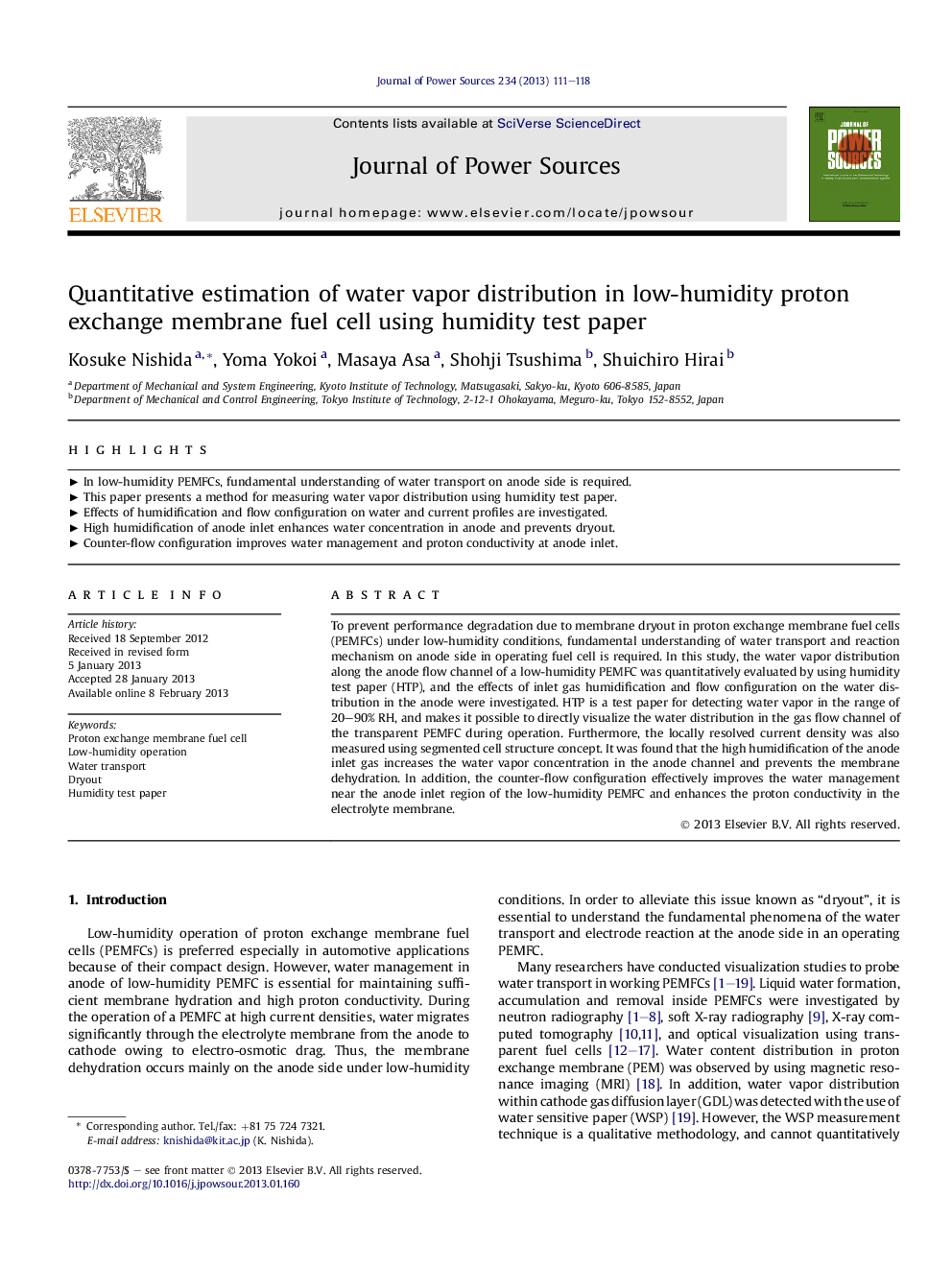| Article ID | Journal | Published Year | Pages | File Type |
|---|---|---|---|---|
| 1287944 | Journal of Power Sources | 2013 | 8 Pages |
To prevent performance degradation due to membrane dryout in proton exchange membrane fuel cells (PEMFCs) under low-humidity conditions, fundamental understanding of water transport and reaction mechanism on anode side in operating fuel cell is required. In this study, the water vapor distribution along the anode flow channel of a low-humidity PEMFC was quantitatively evaluated by using humidity test paper (HTP), and the effects of inlet gas humidification and flow configuration on the water distribution in the anode were investigated. HTP is a test paper for detecting water vapor in the range of 20–90% RH, and makes it possible to directly visualize the water distribution in the gas flow channel of the transparent PEMFC during operation. Furthermore, the locally resolved current density was also measured using segmented cell structure concept. It was found that the high humidification of the anode inlet gas increases the water vapor concentration in the anode channel and prevents the membrane dehydration. In addition, the counter-flow configuration effectively improves the water management near the anode inlet region of the low-humidity PEMFC and enhances the proton conductivity in the electrolyte membrane.
► In low-humidity PEMFCs, fundamental understanding of water transport on anode side is required. ► This paper presents a method for measuring water vapor distribution using humidity test paper. ► Effects of humidification and flow configuration on water and current profiles are investigated. ► High humidification of anode inlet enhances water concentration in anode and prevents dryout. ► Counter-flow configuration improves water management and proton conductivity at anode inlet.
